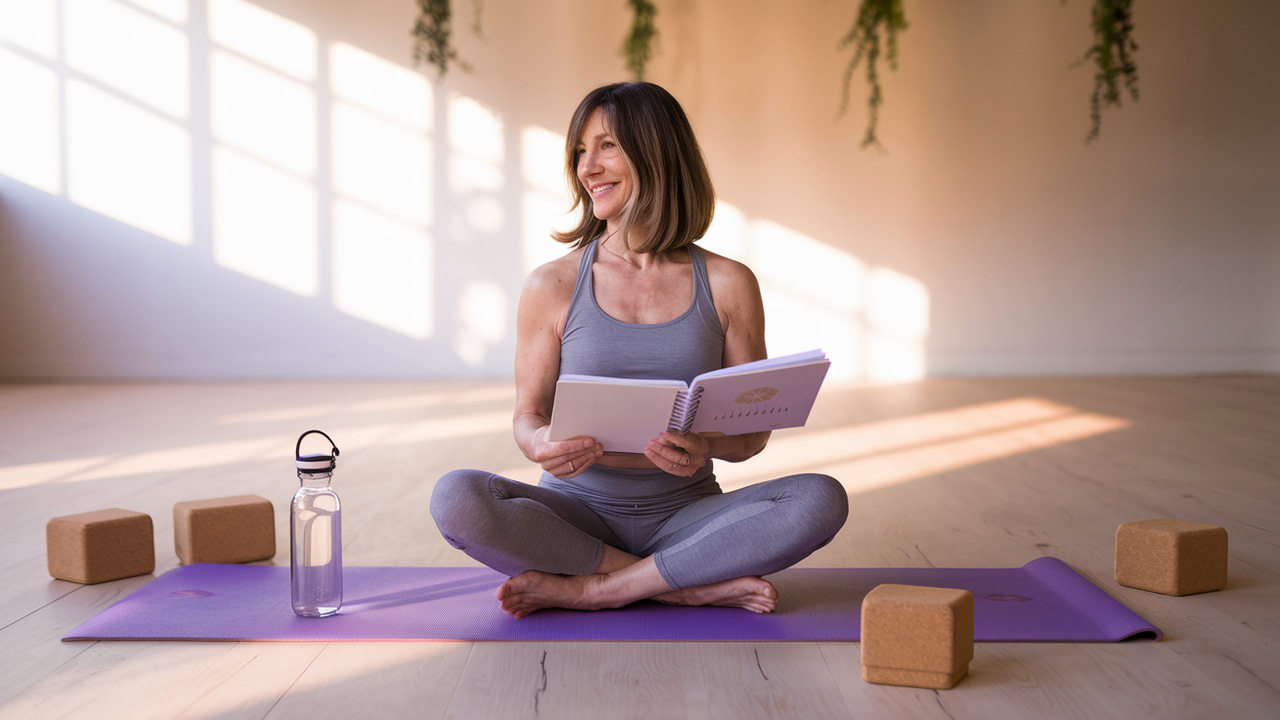
Scheduling Breaks and Active Recovery in Yoga
A Thoughtful Approach to Enhancing Your Yoga Practice with Well-Timed Breaks and Recovery
Understanding how to incorporate well-planned breaks and active recovery can elevate your yoga practice and sustain your progress.
What You’ll Learn
- How strategic breaks can enhance both relaxation and performance in your yoga routine.
- Effective techniques for active recovery that support muscle regeneration and flexibility.
- Step-by-step methods to integrate scheduling breaks and recovery periods into your daily practice.
- Practical tools and a customizable table to monitor progress over time.
- Guidelines on adapting and evolving your yoga routine for long-term success.
Recognizing the Importance of Scheduled Breaks in Yoga
For sustainable progress, understanding the balance between practice and rest is crucial. Scheduled breaks during yoga sessions allow your body to recover from intense poses and prevent overstrain. With thoughtful planning, breaks can transform your routine by boosting energy levels and reducing the risk of injury.
Taking a pause is not a sign of weakness – it’s a sign of a smart practice. For more details on optimizing your yoga sessions for fat burn, check out our guide to Maximizing Fat Burn: Yoga Session Duration.
Integrating Active Recovery Techniques into Your Routine
Active recovery in yoga involves low-intensity movements that help maintain blood flow and promote healing. Instead of complete rest, consider gentle stretches, mindful breathing, or even a slower sequence of yoga poses. This method helps in reducing muscle soreness while preparing you for the next challenge.
For more insights into diversifying your practice, check out our article on Tips for Adjusting Your Yoga Routine Over Time.
Additionally, several sources, such as Harvard Health and Mayo Clinic, provide valuable external perspectives on the benefits of active recovery in exercise routines.
Crafting a Balanced Yoga Session with Scheduled Breaks
To design an effective yoga session, divide your practice into segments: warm-up, core sequence, and cooldown. Integrate short breaks during transitions to allow the body to stabilize and refocus. For example, try incorporating a 2–3 minute period of gentle stretching or deep breathing exercises between more intense sequences.
Use a timer or a dedicated scheduling app to help maintain consistency. Observing how your body reacts over time will allow you to fine-tune these intervals for optimal performance.
Tools and Strategies to Optimize Scheduling and Recovery
A variety of tools can support your journey toward an optimized yoga routine. Below is a table that compares scheduling tools and recovery techniques, allowing you to customize your approach as needed.
| Tool/Technique | Key Feature | Usage Strategy |
|---|---|---|
| Yoga Timer Apps | Customizable intervals and alerts | Set breaks for warm-up, core practice, and cooldown |
| Wearable Fitness Devices | Heart rate monitoring and activity tracking | Monitor recovery phases and adjust intensity accordingly |
| Mindfulness Journals | Track observations and physical responses | Record how breaks affect your overall performance |
| Active Recovery Routines | Low-intensity exercises | Integrate gentle stretches or modified poses during breaks |
Feel free to add custom suggestions or additional strategies to personalize your practice.
Adapting Your Routine and Tracking Progress Over Time
Consistency in yoga practice requires ongoing adjustments. Review your routine periodically and make changes based on your body’s responses. Active tracking methods, such as performance logs or digital trackers, can help you see improvements as you evolve your practice.
Another useful read on how to keep your practice fresh is found in Weekly Yoga Plans for Consistent Weight Loss. This reinforces the idea that every element of your routine be it active recovery or intuitive breaks—plays a critical role in long-term success.
Recap
This article covered the crucial aspects of incorporating scheduled breaks and active recovery into your yoga practice:
- The importance of taking breaks
- Active recovery techniques
- Crafting a balanced session
- Utilizing tools and scheduling strategies
- Adapting your routine and tracking progress
Frequently Asked Questions
- Why are breaks important in a yoga practice?
- Breaks allow for muscle recovery, prevent fatigue, and help maintain focus, making your practice more effective and less prone to injury.
- What is active recovery and how does it differ from rest?
- Active recovery involves engaging in light exercises during breaks, keeping circulation active and promoting healing, unlike complete rest which involves no movement.
- How can I determine the right frequency for breaks during my session?
- Monitor your body’s responses and use tools like timers or fitness trackers. Adjust break intervals based on factors such as intensity and personal fatigue levels.
- Can scheduling breaks improve my overall flexibility and performance?
- Yes, scheduled breaks help prevent overexertion, allowing your muscles to relax and adapt, leading to gradual improvements in flexibility and performance.
- Are there any recommended resources to optimize my yoga break scheduling?
- Resources such as specialized yoga timer apps, wearable fitness devices, and guidance from trusted health websites like Medical News Today can be very helpful.
Next Article section
If you’ve enjoyed learning about integrating well-timed breaks and active recovery within your yoga practice, you’ll find the comparison between yoga and cardio just as illuminating. Exploring the science behind yoga and cardio to understand which method burns fat more effectively and fits your lifestyle can broaden your approach to fitness: Comparing Yoga and Cardio: Which Burns More Fat?.
Dive deeper into your journey towards holistic weight loss and a balanced routine by exploring diverse perspectives and practical strategies.
Call to Action
Ready to refine your yoga practice? Start by reviewing your current routine and experiment with strategic breaks and active recovery techniques. Whether you’re a beginner or an experienced practitioner, taking deliberate steps to integrate these practices can lead to improved performance and overall well-being. Embrace this opportunity to create a sustainable plan that supports both your fitness goals and holistic health.
Explore more insights on our Content Hub Home and transform your practice today.